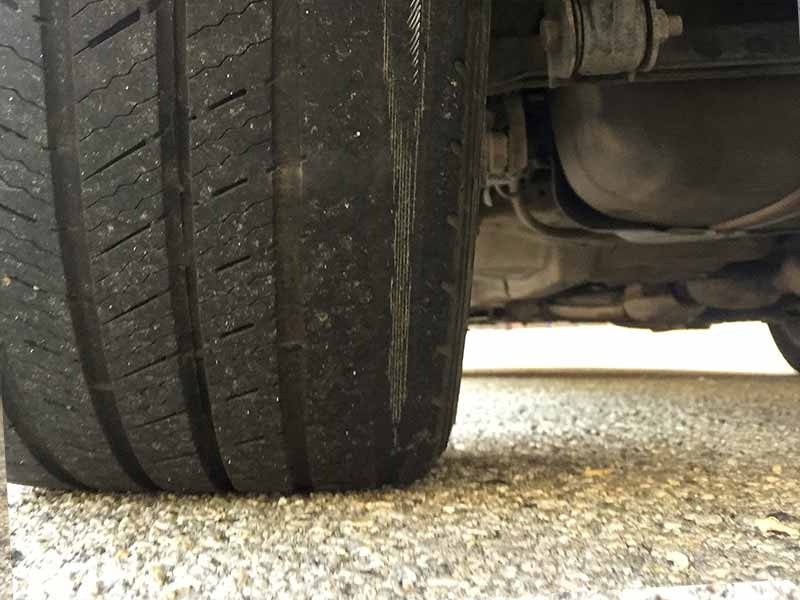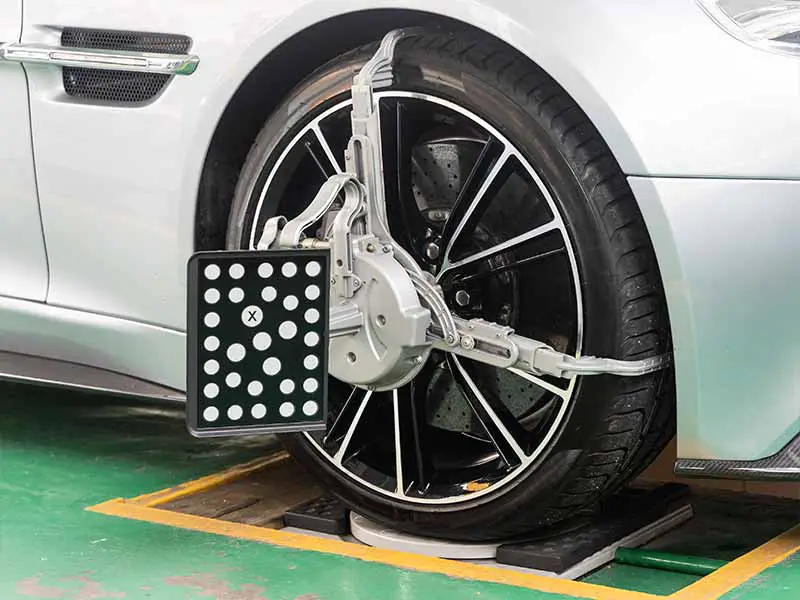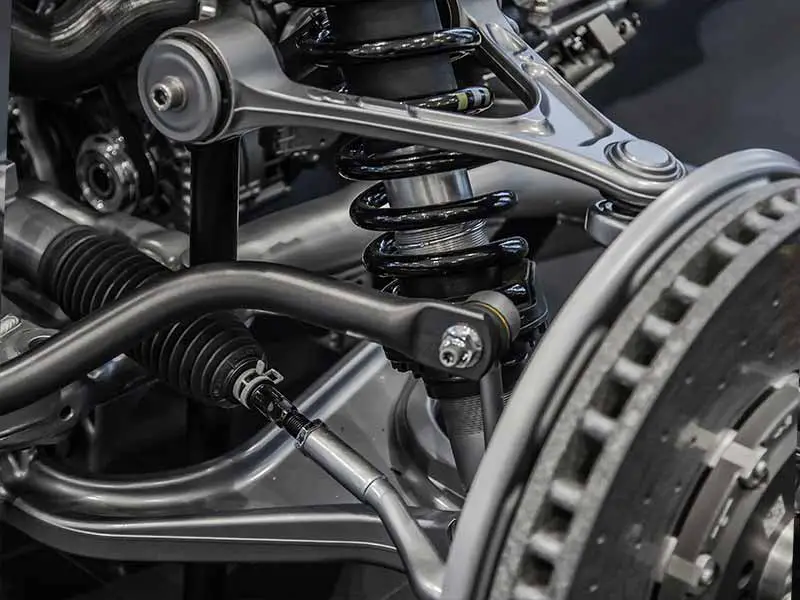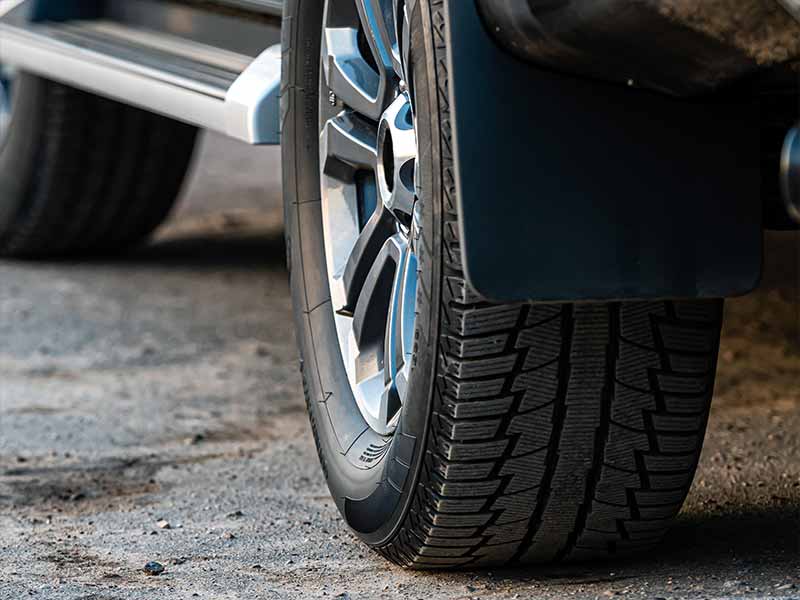Ever find yourself puzzled by the inside edge of your tires wearing out faster than the rest? It’s a common issue, and understanding its causes can help you extend the lifespan of your tires, enhance your vehicle’s performance, and most importantly, ensure your safety on the road.
What Causes Tire Wear On The Inside?
Inner tire wear is often caused by improper wheel alignment, negative camber angles, incorrect tire pressure, worn or damaged suspension components, and failing steering knuckles.
In this article, we’ll break down the concept of tire wear, explore the common causes of inside tire wear, show you how to spot signs of it, and offer practical advice on how to fix and prevent it. By understanding these key concepts, you’ll be well-equipped to take better care of your tires and your vehicle.
Let’s take a closer look.

Uneven Tire Wear
Uneven tire wear is a situation where your tires wear down differently in different places. This could mean more wear on the edges of the tire than the middle, or vice versa. Specifically, we’re interested in inner tire wear, where the inside edge of your tire wears out faster than the rest of it.
Irregular Tire Wear
Irregular tire wear is when the wear pattern on your tires doesn’t follow a consistent pattern. Instead of a uniform wear across the tire, you might see patches where the rubber has worn down more. Irregular patterns can indicate issues with your car’s suspension or alignment, which can be more serious and warrant immediate attention.
Why Tire Wear isn’t Uniform
Tire wear doesn’t happen uniformly across the entire surface of the tire. Different parts of your tire may wear out at different rates depending on a range of factors. These include your driving habits, your vehicle’s alignment, the type of roads you drive on, and how well you maintain your tires.

Causes of Inside Tire Wear
Let’s touch on each of the potential causes of inner tire wear:
The Role of Wheel Alignment
Wheel alignment plays a significant part in inner tire wear. Ideally, your wheels should be perfectly parallel and vertical to the road for even wear. However, if they’re slightly tilted inward or outward, this can lead to inner or outer tire wear respectively. This tilt is often a result of improper wheel alignment, a common cause of wear on the inside of your tires.
Negative Camber Angle
In some cases, the alignment issue may be due to what’s known as a negative camber angle. This is when the top of your wheel leans inward towards the car. While a slight negative camber can improve handling for high-performance driving, too much can cause excessive inner tire wear.
Tire Pressure and Its Effects
The pressure inside your tires also significantly impacts tire wear. Under-inflated tires tend to wear more on the edges, both inside and outside, while over-inflated tires wear more in the middle. Keeping your tire pressure at the manufacturer’s recommended level helps promote even tire wear.
Importance of Suspension Components
Suspension components, including ball joints, shock absorbers, and control arm bushings, help your tires maintain even contact with the road. If these parts are worn or damaged, they can lead to uneven or excessive tire wear. Regularly inspecting and replacing these components is crucial to avoid inner tire wear.
Steering Knuckles and Inner Tire Wear
Steering knuckles, a critical part of your car’s steering and suspension system, can also affect tire wear. If they’re worn out or damaged, they can mess with your wheel alignment and lead to uneven tire wear.
Rear Tires and Overall Wear
Last but not least, don’t forget about your rear tires! If they’re wearing out unevenly, it can affect how your front tires wear, too. This is especially true for front-wheel-drive vehicles, where the front tires do most of the work. Regularly rotating your tires can help ensure they wear evenly and last longer.
How to Fix Inside Tire Wear
Proper maintenance is often the best way to fix inner tire wear. Let’s touch on the best practices for fixing inside tire wear:
Importance of Proper Wheel Alignment
Getting your wheels aligned correctly is one of the most effective ways to fix inner tire wear. A professional wheel alignment ensures your wheels are parallel and vertical to the road, promoting even tire wear. So, if you’ve noticed excessive inner tire wear, a trip to the mechanic for a wheel alignment should be high on your list.
Suspension System Components Maintenance
Another crucial area to focus on is your vehicle’s suspension system. Regular maintenance of your suspension components, such as the worn ball joints, worn control arm bushings, and shock absorbers, can significantly reduce inner tire wear. If these components are worn out or damaged, replacing them will help your tires maintain consistent contact with the road and promote even tire wear.
Utilizing a Portable Tire Inflator
Maintaining proper tire pressure is another effective way to combat inner tire wear. A portable tire inflator can be a handy tool for this. Regularly check your tire pressure and use your inflator to adjust it to the manufacturer’s recommended level. This helps ensure your tires are not under-inflated, which could lead to wear on the edges, including the inside.
Steering Components Maintenance
Don’t forget about your steering components! Regularly inspecting and repairing parts like the steering wheel and steering knuckles can help prevent uneven tire wear. These components affect your wheel alignment and, if worn or damaged, can contribute to inner tire wear.
Regular Checks and Adjustment of Camber Angle
Lastly, consider having your vehicle’s camber angle checked regularly. If you have excessive negative camber (where the top of the wheel tilts inward), it could be contributing to your inner tire wear. A professional can adjust the camber angle to improve tire contact with the road and reduce inner tire wear.

Prevention Tips for Inside Tire Wear
Staying on top of regular tire maintenance is the best prevention. Let’s go over the key maintenance practices that will ensure your tires wear evenly:
Maintaining Tire Pressure
Maintaining proper tire pressure is a fundamental aspect of tire care. It’s important to regularly check your tire pressure and adjust it to match the manufacturer’s recommended level. Doing so can prevent various types of uneven tire wear, including wear on the inside of your tires.
Regular Servicing of Suspension Components
Suspension components such as ball joints, shock absorbers, and control arm bushings play a vital role in ensuring your tires wear evenly. Regular checks and servicing can identify any wear or damage early, allowing you to replace these components before they lead to inside tire wear.
Regular Checks and Adjustments of Steering System
Similarly, regular maintenance of your steering system can help prevent inside tire wear. This includes inspecting and repairing parts like the steering wheel and steering knuckles. If these components are worn or damaged, they can affect your wheel alignment and lead to uneven tire wear.
Frequent Tire Rotations
Another good practice is to rotate your tires regularly. This means swapping your front and rear tires. Regular tire rotation helps ensure all your tires wear evenly and can help prevent inside tire wear, especially on front-wheel-drive vehicles.
Periodic Wheel Alignment Checks
Lastly, don’t forget to have your wheel alignment checked regularly. Misaligned wheels can cause a range of tire wear problems, including inner tire wear. A professional wheel alignment can ensure your wheels are perfectly parallel and vertical to the road, promoting even tire wear.

Resources
Below are some links you may find helpful when learning about tires
- What causes tire wear on the inside? – Get Jerry
- Tire wear patterns: What can cause uneven tire wear? – Allstate
Final Thoughts
The key factors contributing to inner tire wear include improper wheel alignment, negative camber angle, incorrect tire pressure, and worn or damaged suspension and steering components.
Regularly inspecting these components and maintaining the correct tire pressure can not only extend the lifespan of your tires but also enhance the performance of your vehicle. Remember, prevention is always better than cure.
Good luck and happy motoring.




